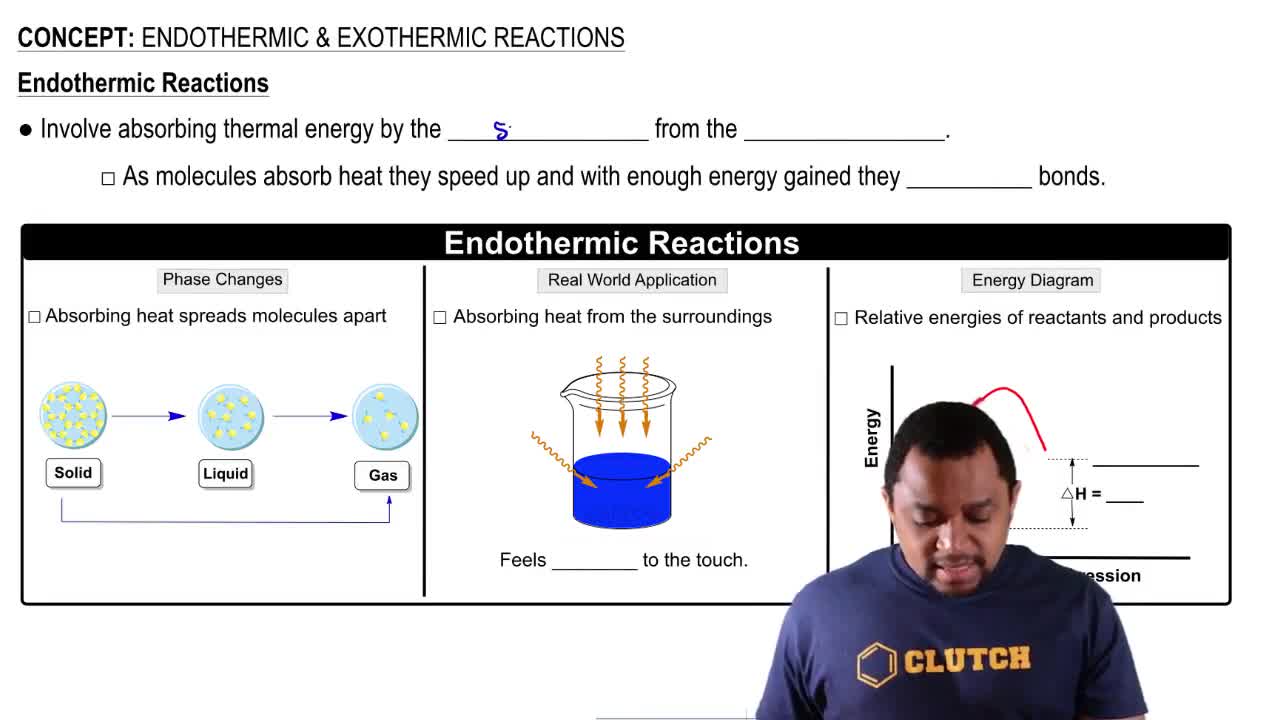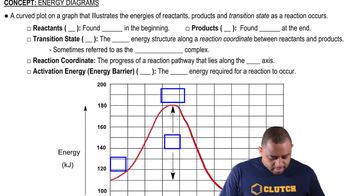Here are the essential concepts you must grasp in order to answer the question correctly.
Endothermic Reactions
Endothermic reactions are chemical processes that absorb energy from their surroundings, typically in the form of heat. This results in a decrease in the temperature of the surroundings. The enthalpy change (ΔH) for these reactions is positive, indicating that the products have higher energy than the reactants.
Recommended video:
Endothermic & Exothermic Reactions
Activation Energy
Activation energy is the minimum energy required for a chemical reaction to occur. It represents the energy barrier that must be overcome for reactants to transform into products. In endothermic reactions, the activation energy can be significantly higher than the enthalpy change, as the system needs to absorb energy to initiate the reaction.
Recommended video:
Energy Diagrams
Energy diagrams visually represent the energy changes during a chemical reaction. They typically plot the energy of the system against the progress of the reaction. For endothermic reactions, the diagram shows a rise in energy as reactants are converted to products, with the activation energy depicted as a peak that must be surpassed for the reaction to proceed.
Recommended video:
 Verified step by step guidance
Verified step by step guidance

